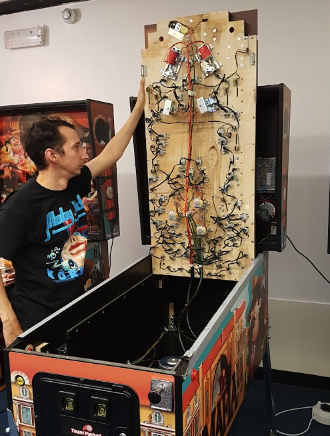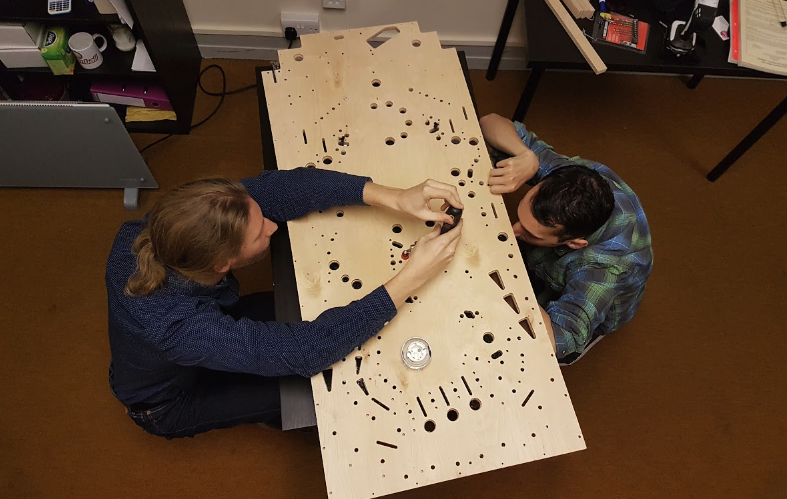“Raspberry Pi is a powerful tool that has already found its place in the video game community with RetroPie. We wanted to do the same and create new, fun games with the Raspberry Pi,” explains Romain Fontaine. When the team sat down to decide on the theme and title for their pinball machine, it became clear they were all fond of games from the 1980s era. Their retro game, The Mafia, “brings the player back to Chicago and the 1930s Prohibition Era with gangsters, casinos, and of course, a bank to rob!”
Pi-eyed
Team Pinball originally designed their game for Raspberry Pi 2, noting its compact size and price and that it had “everything we needed”, including being able to output audio, drive the screen, and control the machine through its GPIO,” says Romain. Having been updated and upgraded in the five years since Mafia Pinball launched to some acclaim in the pinball enthusiast arena, The Mafia is now based on a Raspberry Pi 3 that runs game code on top of a modified Linux image optimised for fast boot and low latency. There are two separate sets of software. One runs the game logic that reads the switches located in the machine and drives the solenoids and light show; the other plays music and audio effects, and also renders the score and animations on the LCD screen.
Starting from scratch
Team Pinball designed the game and cabinet themselves, basing it on their own sketches, cutting playfields, wiring harnesses, and the electronic controller. The game’s pinball layout is their own design too, while most of the pinball-specific parts, such as mechanisms, are standard and can be bought on pinball websites. As far as possible, parts were locally sourced: the wooden cabinet was made by a Welsh company, with printing and glass panels also done in Wales. “Our office is only 30 minutes away from Raspberry Pi’s factory,” says Romain, so they can also count that as a locally sourced part.
Team Pinball designed their own controller board, called Rboard, specifically for Raspberry Pi that is compatible with direct switches, as well as a switch matrix with up to 100 switch inputs. “It can drive more than 200 LEDs and 48 solenoids. This is more than previous pinball controllers such as the WPC, while using one tenth of the board space thanks to Raspberry Pi,” says Romain. “Several revisions” to the Rboard added a watchdog circuit to protect the hardware, capacitors, “and a regulator to maintain a perfect 5 V for Raspberry Pi.” The latest version includes a DAC for improved audio quality. Video needed to be in H.264 format, so they had to find alternative rendering techniques.
Manufacturing was measured in a combination of metric for bespoke parts and imperial for standard pinball parts, which added to the challenge – not least because some of the manufacturers had never worked on a pinball machine before. When the 32-tonne lorry delivering everything to Team Pinball’s HQ arrived, turning down the narrow Welsh lane was a feat too far, so Romain and his colleagues had to carry the cabinets for the last part of their journey in the pouring rain. Nonetheless, everything was assembled and comprehensively checked before Mafia Pinball eventually made its much-anticipated debut.
The game has been a big hit in the pinball community, gaining numerous plaudits and orders. Their machines have shipped globally, to USA, Canada, Sweden, France, Austria, and even Australia. A Canadian company also uses the Team Pinball system for their game design. Better yet, Romain says Team Pinball “absolutely!” has more pinball machines in the pipeline. “More pinball projects, all powered with Raspberry Pi, CM4, and Raspberry Pi Pico!”






